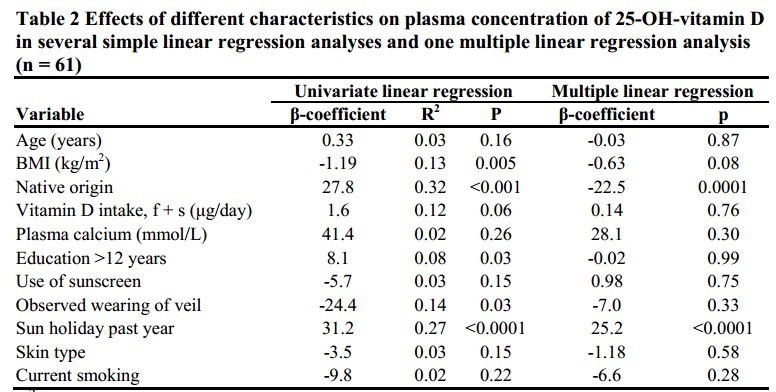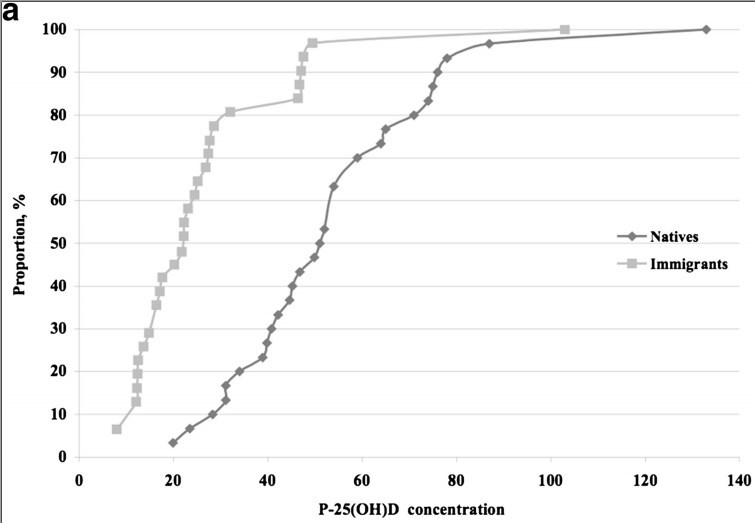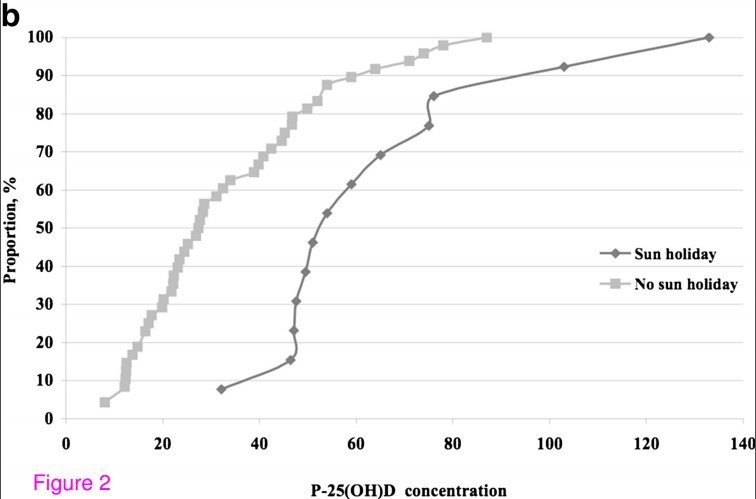Suncation adds 12 ng of vitamin D to Sweden women
Evaluation of sun holiday, diet habits, origin and other factors as determinants of vitamin D status in Swedish primary health care patients: a cross-sectional study with regression analysis of ethnic Swedish and immigrant women
Anne Bjork, : [email protected]
Asa Andersson : [email protected]
Gunnar Johansson gunnar.j [email protected]
Karin Bjorkegren [email protected]
Annika Bardel [email protected]
Per Kristiansson [email protected]
1 Department of Public Health and Caring Sciences, Family Medicine and Preventive Medicine unit, Uppsala University, Box 564, Uppsala SE-751 22, Sweden
2 Gottsunda Primary Health Care Centre, Box 25024, Uppsala SE-750 25, Sweden
Background: Determinants of vitamin D status measured as 25-OH-vitamin D in blood are exposure to sunlight and intake of vitamin D through food and supplements. It is unclear how large the contributions are from these determinants in Swedish primary care patients, considering the low radiation of UVB in Sweden and the fortification of some foods. Asian and African immigrants in Norway and Denmark have been found to have very low levels, but it is not clear whether the same applies to Swedish patients. The purpose of our study was to identify contributors to vitamin D status in Swedish women attending a primary health care centre at latitude 60°N in Sweden.
Methods: In this cross-sectional, observational study, 61 female patients were consecutively recruited between January and March 2009, irrespective of reason for attending the clinic. The women were interviewed about their sun habits, smoking, education and food intake at a personal appointment and blood samples were drawn for measurements of vitamin D and calcium concentrations.
Results: Plasma concentration of 25-OH-vitamin D below 25 nmol/L was found in 61% (19/31) of immigrant and 7% (2/30) of native women. Multivariate analysis showed that reported sun holiday of one week during the last year at latitude below 40°N with the purpose of sunbathing, BMI and native origin, were significantly, independently and positively associated with 25-OH-vitamin D concentrations in plasma with the strongest association for sun holiday during the past year.
Conclusions: Vitamin D deficiency was common among the women in the present study, with sun holiday, origin and BMI as main determinants of 25-OH-vitamin D concentrations in plasma. Given a negative effect on health this would imply needs for vitamin D treatment particularly in women with immigrant background who have moved from lower to higher latitudes.




Note: The supplement to increase 12 ng of vitamin D costs less than $20/year,
which is much much less than the cost of the suncation
PDF is attached at the bottom of this page
